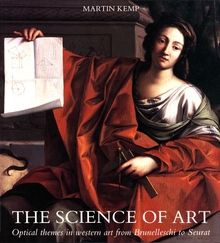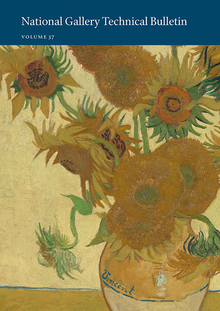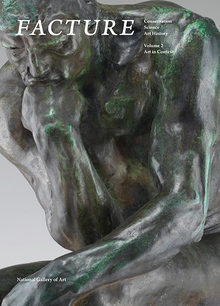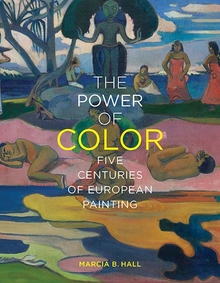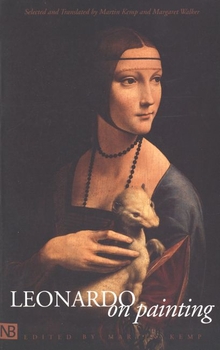The Science of Art
WARNING
You are viewing an older version of the Yalebooks website. Please visit out new website with more updated information and a better user experience: https://www.yalebooks.com
Optical Themes in Western Art from Brunelleschi to Seurat
Martin Kemp
"[A] wonderful book. . . . Martin Kemp has convincingly demonstrated that even the most diverse styles of Western art from the Renaissance to modern times remained ever enthralled by scientific optics. . . . [A] handsome volume."—Samuel Y. Edgerton, American Scientist
"Kemp has performed a valuable service. . . . His style is lucid and he emerges as an honest broker who judiciously weighs the historical evidence. He has an impressive command of the literature of both art and optical science across much of Europe and over a span of four centuries. . . . Kemp’s thesis is amply illustrated with several hundred plates, including many of his own line drawings. . . . The reader is led gently through the history of art and the details of optical science to appreciate their interrelationship."—Geoffrey Cantor, Oxford Art Journal
"This work will open up for its readers a new appreciation of the skill of many artists, from the 15th to the 20th century. The color and black-and-white reproductions are superb, and the text is well written. Kemp's work will be the basis for many future studies of how artists, consciously or unconsciously, use mathematical and scientific principles."—Rev. Peter F. Arvedson, Science Books and Films
"A lavish and magnificent book. . . . Enhanced by more than 500 historic illustrations, the text is a dazzling, luxurious look at a wide range of issues related to optical science and art, including anamorphosis, drawing machines, stereoscopic photography, apparent movement, color theory, and others."—Ballast Quarterly Review
"This impressive study . . . should become a standard. . . . [Kemp's] clear expositions of the methods of about forty perspectival theorists is as remarkable as is his scholarship, which makes accessible obscure or forgotten works in a variety of languages."—Patrick Maynard, Journal of Aesthetics and Art Criticism
"Kemp has here amassed an enormous amount of material convincingly showing that even the most diverse period styles in Western art for the Renaissance to modern times remained enthralled by (even in conscious opposition to) Euclidian geometry. . . . A truly beautiful volume."—Samuel Y. Edgerton, Jr., Renaissance Quarterly
"A very full, often technically detailed history of both sides of a historical relationship which began with the adoption of linear perspective by Renaissance painters."—I. H. C., Romantic Movement
"By making available this generous and clear account of the histories of `optical themes in Western art," Martin Kemp has provided a solid basis for their further study and understanding. He has also provided access to the principles and problems that fueled the imaginations of Western artists through centuries of the highest accomplishment. His book is a major contribution to the future explanation and interpretation both of the poetry and of the purposes underlying that accomplishment."—David Summers, Art Bulletin
"This hugely informative work comprises some 340 pages of dense text, which is lavishly illustrated with more than 500 reproductions, photographs and diagrams, some of which are the author’s own drawn analyses of the perspectival structures of some of the greatest works of western art. It is a fascinating account, rooted in what Professor Martin Kemp describes as the gross hypothesis that there was a direct relationship between optical science and naturalistic art during the period he covers."—Wendy Smith, New Scientist
"Beautifully produced and illustrated. . . . This is a book for those with sore eyes and brains tired of woolly generalisations on art and pictures. The Science of Art has a rare depth and range of scholarship which includes fascinating details of techniques and devices with carefully expressed insights on the perceptual problems of the artist and the role of the viewer. . . . This scholarly work, with its detailed history, its insights on the science, art and craft of painting, and its many stunning and technically interesting pictures, makes this book a delightful and useful possession."—Richard L. Gregory, Interdisciplinary Science Reviews
"His style is lucid and he emerges as an honest broker who judiciously weighs the historical evidence. He has an impressive command of the literature of both art and optical science across much of Europe and over a span of four centuries. . . . Kemp’s thesis is amply illustrated with several hundred plates, including many of his own line drawings. . . . The reader is led gently through the history of art and the details of optical science to appreciate their interrelationship. . . . Kemp has performed a valuable service."—Geoffrey Cantor, Oxford Art Journal
"Kemp presents a wide-ranging and stimulating account of some of the crucial intellectual tools in the making of European art. His study is situated between the history of science and the history of art, and is relevant to both. . . . The volume contains a very large amount of original research, in particular concerning the history of perspective from the seventeenth to the nineteenth century, and colour theory, of which no comprehensive account had so far been written. . . . The book is richly provided with illustrations. . . . There can be little doubt that for the unrivalled breadth of its scope and the intelligence of its presentation, The Science of Art will be a vital stimulus to future research, and will allow scholars working on various different aspects of the subject to place their work in a broader historical context."—T. Frangenberg, Annals of Science
"An extraordinarily ambitious, even daring, enterprise. . . . The book leaves us in no doubt about its author’s expertise in both fields. It includes the most comprehensive account of the development of perspective theory and practice I know."—Thomas Puttfarken, Times Higher Education Supplement
"[A] lengthy and erudite text. . . . Unmistakably a formidable achievement."—J. M. Nash, Times Literary Supplement
"This is a serious and ambitious book on an important subject. . . . The author has succeeded in bringing together an enormous body of material, and in forging it into a coherent history. . . . Everyone with a serious in western art will find much that is stimulating. The book is beautifully produced and illustrated."—Peter Humfrey, Country Life
"A detailed history of how the sciences of perspective and of color influenced the practices and works of artists from 1400 to 1880. . . . A rich and subtle history of the complex relations between artists’ practices and their theoretical knowledge. The tone is temperate, the judgments are balanced, and the arguments are stated so completely that the reader needs no previous knowledge of perspective or color theory."—Choice
"This beautifully illustrated book addresses such topics as the invention of perspective, the development of the mechanical and optical devices that preceded photography, and the early attempts to incorporate color theory in painting."—Science News
"One of the most lucidly written art history books in recent memory. . . . This is a superb and thoughtful book, with a level of writing to which few can aspire. Highly recommended for general as well as special collections."—Library Journal
"This beautifully made volume . . . shows us the unity of the visual study of nature—the exalted mutual task of Renaissance science and art. Professor Kemp’s work on Leonardo da Vinci is well known. Here his canvas is wider still: the works and the writings of a great many artists refract the relevant visual science. The heavy book signals artistic intentions: its big, coated pages are filled with diagrams and reproductions, and the color plates glow with exemplary forms by the masters. Its readers are encouraged to be braver than most students of the arts."—Scientific American
"[A] wonderful book. . . . Martin Kemp has convincingly demonstrated that even the most diverse styles of Western art from the Renaissance to modern times remained ever enthralled by scientific optics. Furthermore, Kemp keeps his readers’ attention always focused on this matter and never strays into the vagaries of currently fashionable political interpretation. . . . [A] handsome volume."—Samuel Y. Edgerton, American Scientist
Publication Date: April 22, 1992
549 b/w + 16 color illus.

